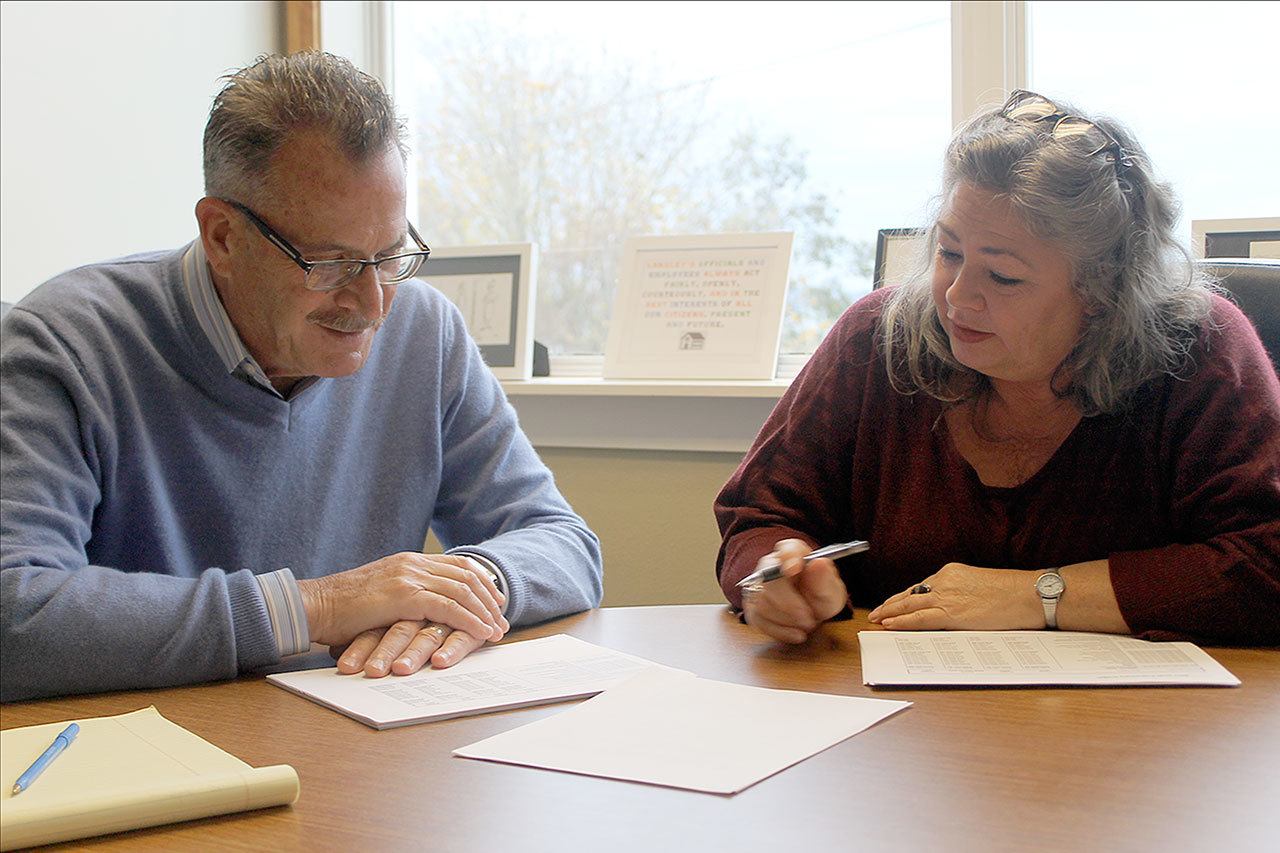Revenues that make up Langley’s draft $6.5 million budget will be the subject of a public hearing at City Hall next week.
Details on the rest of the budget, however, are still unknown. City leaders declined to release the document to The Record, citing state public disclosure rules that exempt “draft” documents from disclosure. The budget will be made public on Nov. 18 as required by state law, but no sooner.
Mayor Tim Callison said the budget is still in its drafting phase and that there will be adequate time for citizens to comment and provide input on its contents.
“It will be published on the [city] website when it’s the appropriate time for them to ask questions and make suggestions,” Callison said. “Right now, it’s too rough.”
City council members are the only ones who have had a chance to get their hands on the draft budget; two public budget workshops were held in October where they reviewed it line by line, asked questions and made decisions on which funds should go where.
Overall, the 2017 budget total mirrors 2016’s $6.5 million. The 2017 general fund currently totals $1.7 million.
Callison said there are no big projects in the budget other than those funded by grants. One potential grant, a “complete streets” application with the Transportation Improvement Board, could lead to improvements on First Street. If the city is awarded the money, the improvements could include improvements for pedestrian walking, bicycle paths, beautification and a plaza near the upper part of Hladky/Whale Bell Park.
“It’s kind of a mini Second Street project on First Street,” Callison said. “No big plaza, but improving the look of the walkways are included in that.”
Budget totals are determined by the city’s revenues, as expenditures cannot exceed revenues, said Debbie Mahler, Langley’s clerk and treasurer. Certain fixed activities, such as utilities, are also taken into account.
Callison said the overall goal of the budget was to put the city in good financial shape. Some of the initial priorities included kick starting efforts to match federal monies that are going toward street improvement projects until 2020, restoring the reserve balances for street funds, and healthy reserve monies to provide for emergencies and other contingencies.
“The street fund reserve had been taken down during the Second Street construction project, as well as some others that kicked in with that project,” Callison said. “…In budgets following this one, we’ll know what we have to provide for in terms of matching monies in order to get the work done.”
It also includes support for the city’s civic partners, such as House of Hope, Island Shakespeare Festival, and the Langley Whale Center that do “good work” in the community, increase tourism, and support a positive atmosphere, Callison said.
The budget also serves short-term items like payroll, health insurance and daily operational costs, as well long-term things like infrastructure and emergency funding.
Some of the hiccups in the budgeting process came from “lively” conversations with city staff in regard to expenditures, and honing in on figures that would coincide with the amount of room there was to use in the budget. He said the plans were not ambitious, but that some of the requests for replacement of equipment, for example, were a “little more generous then we thought was necessary.”
Callison said that important things for the public to know in regard to the budget is that it’s balanced and is focused on rebuilding reserves.
Mahler added that every city fund — there are 13 of them — is a separate accounting entity and that monies cannot be swapped from one to another.
“A lot of people think we should add up everything we have and spend on the top priorities and divvy out the rest,” Mahler said. “It doesn’t work that way. Each fund has their own money.”


